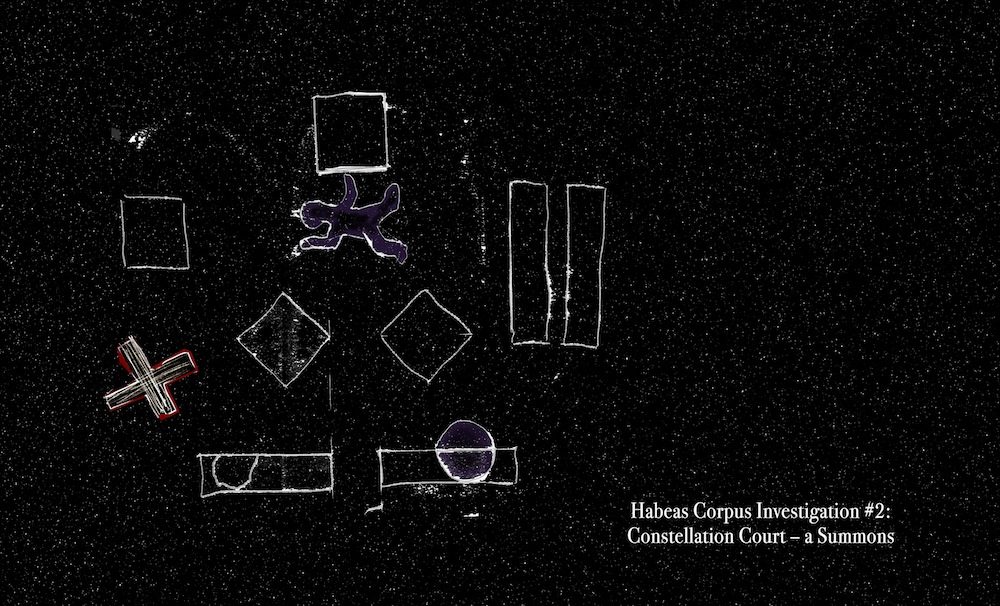Jennifer Nelson: Habeas Corpus Investigation #2: Constellation Court – a Summons

— Research performance, June 1, 7:30 – 9:00pm
Jennifer Nelson
Habeas Corpus Investigation #2: Constellation Court – a Summons
Standing between a State’s power to imprison you and your right to liberty is the Writ of Habeas Corpus–meaning have the body, in court. This basic legal premise can recalibrate the dance between an individual and the massive physical and social power we have given to the government. The machinery of justice is meant to be adversarial and the outcome unbiased, yet the machinery is overburdened and peopled by humans harboring their unconscious biases. Once caught in the gears of the court, with its imperative to proclaim guilty or not guilty, a fair and holistic justice remains elusive.
Please be present for a participatory reflection at Grand Central Art Center on the constellation of courtroom proceedings. Within this space of image and performance, we can visualize and embody how current court architectures structure the gaze and voice, leaving the most affected parties to a crime generally voiceless. Here also, we have the freedom to reshape these architectures and to play freely with new possibilities. How might we create a space for justice to reflect wisdom?
Here are a few reflection points to bring to the conversation:
How can fairness be structured in a way that is not so rigid that it becomes unfair again?
How can â“innocent until proven guiltyâ” be implemented for the defendant so that being brought into the system will not punish or cause irreparable harm to a defendant who has not yet been judged?
How can we address overt and implicit bias within the courtroom?
How can the victim be supported in a way that allows that person to recover a sense of safety? What would that safety or support look like?
What pathways are there for a person found guilty to take accountability and redress the harm he or she has caused, if they sincerely choose to do so?
What might mitigate the harm of the crime on the wider community or on future generations?
With Matthew Campbell, Shaheed Chapple, Ray Chao, Michael Mulkey, and Paris Perrault